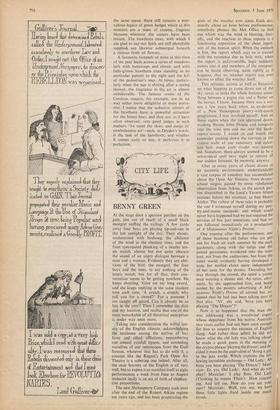PETER QUINCE
The hawthorns did not come into full flower until towards the end of May in my part of southern England. 1 note the fact with- out complaint: it never seems to matter much, to me, whether these seasonal land- marks come over the horizon earlier than expected, or later, so long as they do not fail. But it has made me wonder a bit about the ancient traditions attaching to May blossom, especially the tradition that hawthorn garlands were the essential decoration of the maypole during what were, evidently, the extremely jolly festivi- ties occurring on the first day of that month.
The spring this year, after all, has been mostly mild and sunny; the condPtions which might be expected to bring the haw- thorns into flower without delay all appear to have been present. Yet May was almost
over before our innume,a 1,1e trees. bu hes and hedges of hawthorn burst into that
prodigal blossoming which is the greatest of their many services to the English land- scape. and which is supposed to make an indispensable contribution to the character of the month itself.
One could conclude that our climate has deteriorated significantly since the days of Merry England, but I should require far stronger evidence before accepting such a pessimistic proposition. A much more prob- able explanation. it seems to me, lies in the very antiquity of the May traditions, which means that they were soundly established long before the calendar reform of 1752.
That disturbance in the familiar order of things was. I imagine, the eighteenth century's equivalent of our own processes of decimalisation and metrication. produc- ing roughly comparable public responses of irritation and then acquiescence: and for all its strictly rational justification, it too left behind small scars on ordinary life.
One of these. due to the fact that in the new-style calendar May Day fell eleven days earlier than before. was the destruction of any existing association between haw- thorn blossom and the beginning of May. That is my favourite theory, at any rate.
The hawthorn always seems to me to be quintessentially the characteristic tree of the English village scene, so much so that it would be hard to imagine such a scene without its presence. It is always rash to make such assertions. of course. From my window, as I write this, I can see a cluster of horse chestnuts, some two centuries old.
framing the grey stones of the village church; and it would be easy to represent such a spectacle as the epitome of the village scene which our ancestors created and be- queathed to us. But the horse chestnut, superb as it is when in full flower, as now.
or when simply in luxuriant leaf. is really an immigrant: the thorn has flourished in this island since time immemorial.
Furthermore, it is very nearly ubiquitous here, except in the far north. If I were to walk in any direction from my own door I would come across thousands of thorns within half an hour. and the same could be said by countless people living in different pnrts of the country. Most of the thorns would not have attained the full stature of trees, of course. but would he flourishing humbly in hedgerows.
A great many of these hawthorn hedges were first planted at the time of the enclo- sure Acts which had so profound ao effect upon the English landscape: at the cost of converting the populace into a dispossessed proletariat ripe for being herded into factories a little later. 1 don't suppose any- one has ever estimated the total length of the, vast network of quickthorn hedges then established, but certainly tens of thousands of miles were planted in a relatively brief space of tine, which must rank is one of the more remarkable facts of rural history. Although the current farming lasInon is to reverse the process at something like
the same speed, there still remains a mar- vellous legacy of green hedges which at this moment are a mass of creamy, fragrant blossom wherever the cutters have been lenient. The hawthorn trees, with which I am glad to say our fields are still plentifully supplied, are likewise submerged beneath a riotous froth of flowers.
A favourite footpath of mine at this time of the year leads across a series of meadows lush with buttercups and clover, and with fully-grown hawthorn trees standing in no particular pattern to the right and the left of the pedestrian's way. At times, particu- larly when the sun is shining after a spring shower, the fragrance in the air is almost unbelievable. The famous scents of the Corsican wallas, for example, are in no way either more delightful or more perva- sive. 1 notice that the seductive odours of the hawthorn have a powerful attraction for the honey-bees; and they are, as I have often observed, very good judges in such matters. 'To scent the skies, and purge th' unwholesome air'—such. in Dryden's wol ds, is the task of the hawthorn; and whether it comes early or late, it performs it to perfection.



































 Previous page
Previous page